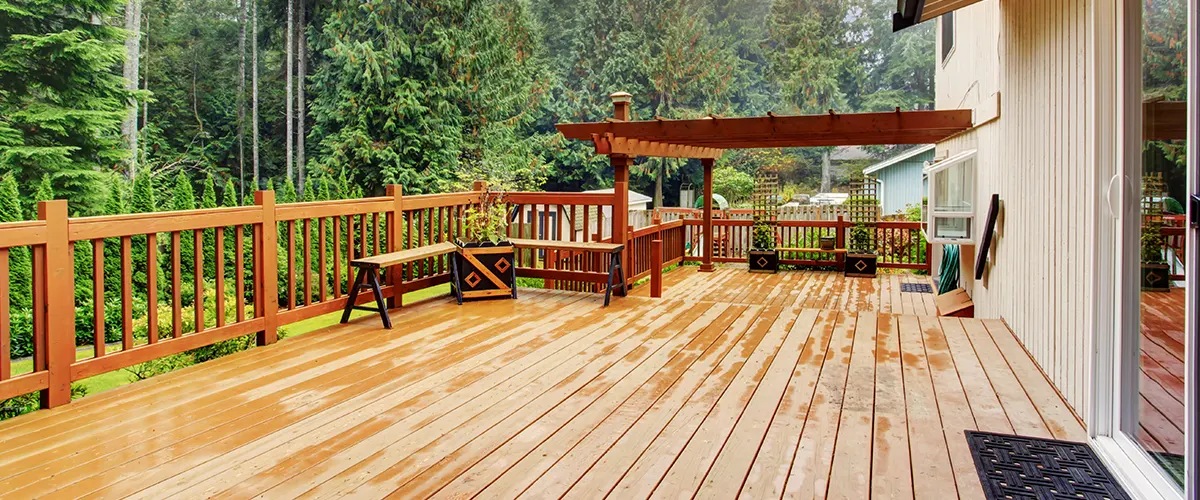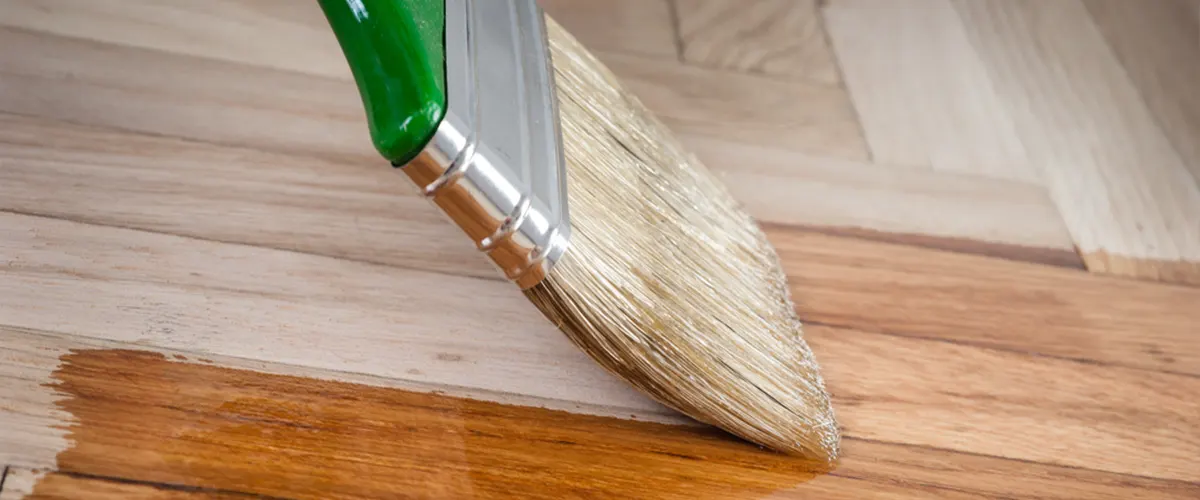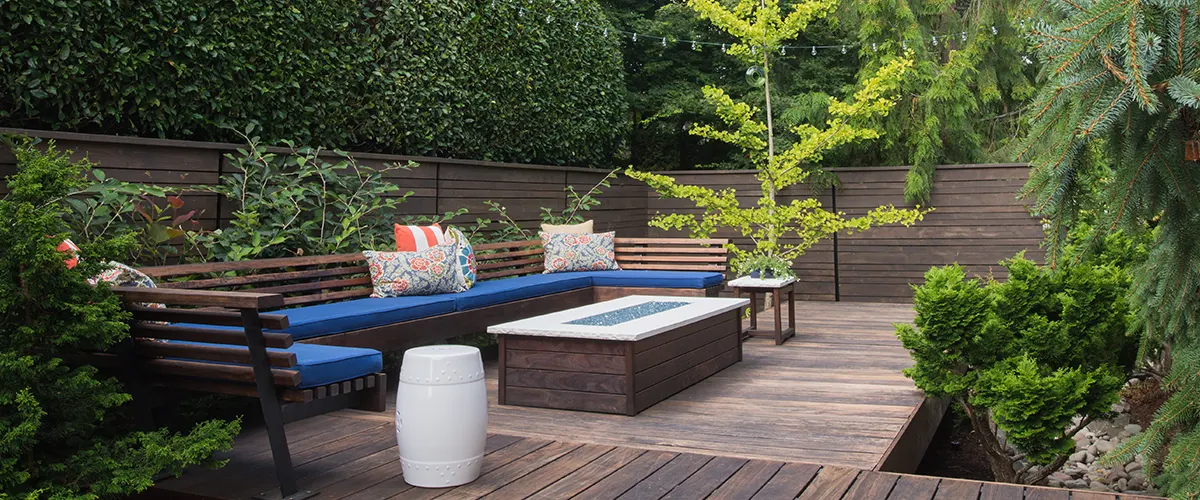Thompson Water Seal is a popular choice for homeowners who want to protect their decks from the elements. A Thompson Water Seal will prolong your deck’s life and keep it in the best shape for years to come.
But can you apply it yourself?
In this blog post, you’ll discover how to apply Thompson’s Water Seal on your deck so that it will last for years.

Benefits Of Thompson's Water Seal
Thompson’s Water Seal has been in the market for a very long time, and it’s proven to be an excellent product.
There are plenty of benefits to this sealant, and we believe it’s worth knowing everything about a product before investing in one.
Apply Thompson Water Seal To Make Redecorating Easy
The perfect way to update your old and favorite room is with Thompson’s water seal. With a wide variety of colors available, you can find the shade that best suits your style and budget. Make your deck match the interior of your home so everything about your home will flow, making the transition feel seamless.
Unlike other sealers that offer minimal protection, this semi-transparent stain will defend your new deck from UV rays and UV damage. Exposure to direct sunlight and mold will not harm your deck anymore, and this sealer’s natural color will make your deck nothing short of impressive.
Seals Out The Water
Thompson’s Water Seal is a one-step process that can be applied to damp wood, leaving it clean and dry. It seals out the water so your decking will last longer, without it risking rot or water damage.
Low Odor
Thompson’s water seal is the perfect product to work with if you have children or pets. The low odor makes it easier for people that are sensitive about smells.
However, you should still wear a mask for increased safety when you apply Thompson water seal.
Works Great Against Mildew
Drying
Long-Lasting
Apply Thompson Water Seal On Treated Wood

How To Apply Thompson's Water Seal
A coat of Thompson’s water seal is important for your deck. It stops the water from getting in and makes it last longer.
However, the right application process is just as important. Not everyone knows the mistakes you can make while applying this sealant. An incorrect application will cause bigger problems down the road, such as rot, mildew, or warping.
Read on to discover how proper application protects your deck and ensures water won’t cause any damage in years to come.
1. Before You Apply Thompson Water Seal
Before getting started on any project, it’s best to clean your workspace. An organized surface increases your productivity when applying the sealer for the first time.
Productivity is shaped by your surroundings; that’s why nobody likes to work in a messy environment. Let’s see how to prepare before you apply Thompson water seal…
Clean the Surface
Things you’ll need:
- A microfiber cloth or a rag to clean the surface
- Water to dampen the microfiber or the rag
Steps to take:
- Dampen the rag or the microfiber in water.
- Rub the material against the surface back and forth.
- Let the surface dry.
Cleaning an Unfinished Wood To Apply Thompson Water Seal
Before you apply Thompson water seal, use a dry microfiber cloth or rag to clean the surface of an unfinished wood deck.
Keep in mind that using a wet microfiber cloth to clean the surface of an unfinished wood could make the wooden boards warp or get damaged.
To check if your wooden deck is finished or not, add a drop of water on its surface. If it absorbs the water drop and leaves a mark, your deck is unfinished.
Steps to take:
- Rub the dry microfiber cloth against the surface back and forth.
- Keep doing this until there is no dust residue left.
- You can also use a soft broom to get rid of the dust or debris.

2. Apply Thompson Water Seal On The Clean Surface
When you apply Thompson water seal, it’s up to you whether you want to use a sprayer or a paint pad. A garden sprayer makes the job easier, but if you don’t have access to one, a piece of cloth or even a small brush could work just fine.
Things you’ll need:
- Thompson's water seal
- A garden sprayer to apply the sealer, a small brush, or a piece of cloth
- Long sleeves, pants, safety glasses, a mask, and gloves.
Steps to take:
- Put on your protective gear before applying a Thompson water seal with a sprayer.
- Take off the plunger tube.
- Mix the product well and fill the spray can with Thompson's water seal.
- Replace the plunger tube.
- Slightly tighten it down until you feel resistance. Do not overtighten it.
- Now you need to depress and release the plunger.
- Pump it up until you feel resistance.
- Do not over pump once you've felt resistance.
- Spray Thompson water seal all over your deck.
- Let it dry for up to 24 hours.
If you’re not using a pump up garden sprayer, use your piece of cloth or brush directly in the sealant can, and then apply it to the deck surface.
The process may take longer than with a sprayer, but the results will be similar.
Using a Paint Pad
Depending on your project, you may want to use a paint pad, a piece of cloth, or a roller to apply your product.
Using a sprayer is definitely the fastest way to get the job done, but there are some alternatives if you don’t want to spend money on a sprayer.
Things you’ll need:
- A paint pad to soak it into the sealer
- Thompson's water seal
Steps to take:
- Pour the sealer into a deck.
- Dip the paint pad into the seal.
- Bring the seal onto the tray area.
- Start at one corner and work from one end to another.
- Apply the sealer parallel to the deck boards.
Wait For The Water Seal To Dry
Give your Thompson’s water seal at least 24 hours to dry thoroughly. Depending on the weather, drying time may vary.
Keep in mind that if you want to apply latex paint over it—you should give the sealant at least 45 days to settle properly.
Cost Of Thompson Water Sealeant
You can find Thompson Water Seal at Walmart for around $20 a gallon, or order it on Amazon for $31 for 1.2 gallons.
Other Deck Sealing Alternatives
Maybe you can’t find Thompson Water Sealant in your local home improvement store, or maybe you just don’t like the brand. That’s fine.
There are dozens of other alternatives to use on your deck. Here are just a few more:
- Cabot Australian Timber Oil: Known for its deep penetration into the wood, Cabot Australian Timber Oil enhances the natural beauty of the wood while providing excellent protection against the elements.
- Behr Premium Transparent Waterproofing Wood Finish: Behr offers a range of wood finishes that protect against UV rays, mildew, and water damage while highlighting the natural grain of the wood.
- Olympic Maximum Waterproofing Sealant: Olympic Maximum is designed to protect and enhance the natural beauty of wood with a durable waterproofing seal. It provides a clear or tinted finish, depending on your preference.
- Sikkens Cetol DEK Finish: Sikkens is known for its high-performance wood finishes. Cetol DEK Finish is a translucent, satin finish that protects against UV rays, moisture, and mildew while allowing the natural beauty of the wood to show through.
Frequently Asked Questions
Yes. Only one coat of this sealant is enough to protect your deck from mold, mildew damage, and rain. Even more, one coat ensures great UV protection to keep your entire deck healthy. Consider applying this sealant on a finished deck, as this will provide extra protection and will make your deck last even longer.
A second coat is not necessary, but it can ensure maximum protection for the entire surface of your decking boards.
Although it is recommended to use a pump-up sprayer, you can also apply this sealant with a roller, a brush, or a paint pad. Keep in mind that you’ll need a rolling tray, a medium nap paint roller, and even an extension pole.
A plastic sprayer is relatively cheap, and you can find one for your personal preference at your home improvement store.
On average, Thompson’s water seal will last for about 5 years. Depending on the weather patterns in your area, this deck sealer might need your attention more often.
In a rainy state, you might need a fresh coat of water seal for ultimate protection every 2-3 years.
Conclusion
Thompson’s Water Seal is a great way to protect your deck and keep it looking new.
The preparation process is important to achieve the best results. Applying the sealer with a sprayer is the most efficient way to cover the surface, but be sure to take precautions when doing so.
While applying the sealant might be easy, the wrong surface preparation can make all your money go to waste. At the same time, applying the sealant is a time consuming chore, and you have better things to do.
Here at DeckBros, we have years of experience in applying sealants and stains on wood decks. If you want a quality sealant application for your deck in Omaha, NE, we can take care of everything for you. Get your free quote today!
Get in touch today and let’s upgrade your space!

